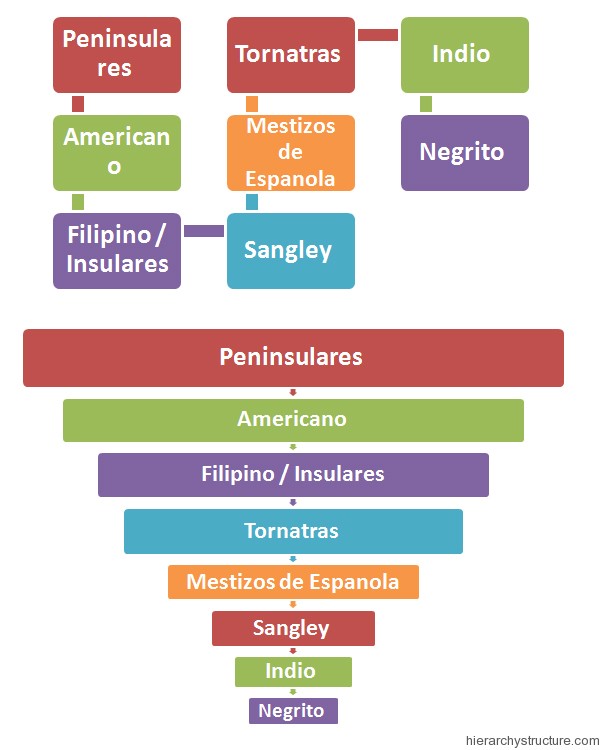Racial hierarchy in Philippines incorporates the practices, views and actions that reflect the fact that the humanity is divided into several groups or divisions that are called races. According to this theory, the members of a certain race share certain qualities and attributes which make that group as a whole more desirable, less desirable, inferior or superior to other races depending upon any such attribute. The racial discrimination has occurred in almost all the major countries in the past and this has greatly influenced the world. The Spanish caste system based on race was abolished after the Philippines’ independence from Spain in 1898.
During the Spanish colonial period from the 16th to the 19th century, the racial mixture in the Philippines occurred on a quite smaller scale as compared to the other Spanish territories. A caste system, like that used in the Spanish America, existed in the Philippines, with some explicit differences. The racial hierarchy in Philippines is explained starting from the highest rank group having maximum power and authority and ending with the group having lowest or zero rights, power and authority.

- Peninsulares – The highest level of the racial hierarchy in Philippines is composed by Peninsulares class. These were the person of pure Spanish descent born in Spain. These people possessed maximum command and influence over the Philippine.
- Americano – Persons of pure Spanish descent living in the Philippines who were born in Spanish America were classified as ‘Americano’. This was the second highest level of the hierarchy.
- Filipino / Insulares – The next rank in the Philippines racial hierarchy is the Filipino. Basically, the Philippine-born children of ‘Americano’ were classified as ‘Filipinos’.
- Tornatras – These were the persons of mixed indigenous Spanish ancestry (referred to as Filipino or Peninsular), Chinese (referred to as Sangley), and Malay (referred to as Indio). Most people of the Tornatras caste in the Philippines used Spanish as their primary language and in many cases converted to the Catholic faith.
- Mestizos de Espanola – The next in the hierarchy is the class Mestizos de Espanola, subordinate to the Tornatras. This term was used to describe people of mixed Filipino and foreign ancestry.
- Sangley – This is a level used in hierarchy to demonstrate the persons of pure Chinese ancestry, while Mestizos de Sangley was used to refer to a person of mixed Chinese and indigenous ancestry
- Indio – Indio was the term that was used to refer the native Malays, but if we consider the legal classification, this term was only used to refer the Christianized Malays who lived in closeness to the Spanish colonies. This was the second lowest rank in the hierarchy.
- Negrito – The lowest level in the Philippines racial hierarchy was of the Negritos. This group represented the black Negro people who possessed minimal or zero rights and worked as labors in the Spanish colonial system.
